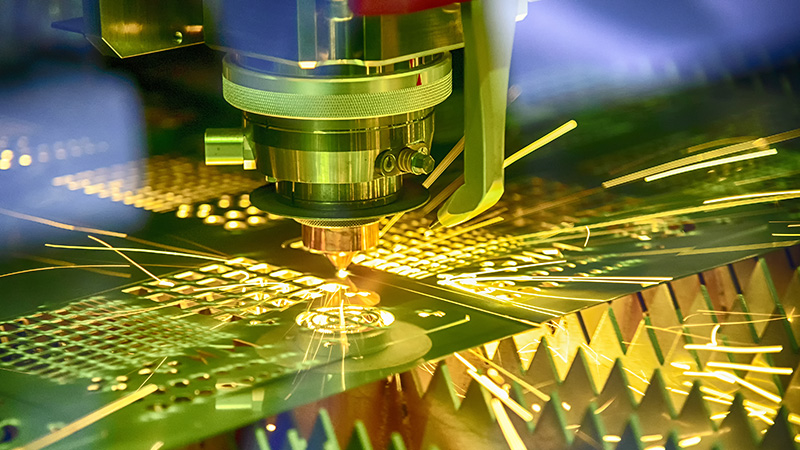
When most people think of lasers, they think of science fiction and ray guns. Laser technology has been around for over 50 years, and today they are used in a variety of ways: delicate surgical equipment, precision measuring devices, and high-powered manufacturing applications such as welding and sheet metal laser cutting.
What is a LASER?
LASER stands for Light Amplification by Stimulated Emission of Radiation. That’s a fancy way of saying a highly amplified and concentrated beam of light.
Like sound, light travels in waves and each color has a different wavelength. For example, blue light has a shorter wavelength than red light.

Image credit: NASA
Laser light is man-made and does not occur in nature. We can artificially create light with similar wavelengths called in phase. This is how laser light is able to be very bright, very focused, and travel great distances.
Laser light can channel its energy into a very small area, which is how it can cut through thick materials like metal or even diamonds. For industrial use, the width of any cutting tool is called a kerf, which engineers must account for when designing parts. However, the kerf of a laser is much smaller than other cutting methods.

Image credit: NASA
Lasers for Manufacturing
CO2 (carbon dioxide) and fiber (also called solid-state) lasers dominate the manufacturing market. Both were developed in the mid-1960’s, but fibers lasers didn’t see widespread use commercially until the 1980’s.
Laser-cut parts are very accurate and need very little, if any, deburring. Other sheet metal cutting methods often require more finishing before moving on to the next stage of the manufacturing process.
Fiber lasers are superior to CO2 in almost every way. Fiber lasers are faster and more energy efficient – and because they have fewer complex parts, are also less expensive to operate and maintain. As an added bonus, fiber lasers can cut through reflective metals (like copper and brass) with ease, which is not the case with CO2.
With lasers, we can create parts in days instead of weeks.
– Jason Hays • Production Supervisor, FabMetals
Laser Cutting vs. Waterjet
Waterjet cutting uses pressurized water (as high as 60,000 psi) focused in a very small point to cut the material. Abrasives can be added for more precision and cutting power. There are several drawbacks to waterjets:
- Less precise
- Can deform parts – especially at the edges
- Noisy
- Messy
Waterjet cutting is more of a “brute force” cutting method for thicker materials and large parts with less complexity.
Laser Cutting vs. Wire EDM
Wire Electrical Discharge Machining (EDM) passes electrical current through a thin wire to cut metal. Most machines use dielectric water, which doesn’t conduct electricity, to help cool the cutting surface. Wire EDM is slow, but highly precise and can hold tighter tolerances than lasers. It can also cut through very thick materials, up to 12″ thick.
Since Wire EDM uses electricity to cut, the material must be conductive or the machine will not work.
At FabMetals, our fiber laser cutting process is built for speed. Our laser machines are outfitted with an automated compact storage system that maximizes cost-effectiveness and efficiency.
Contact us today for your sheet metal cutting needs.



